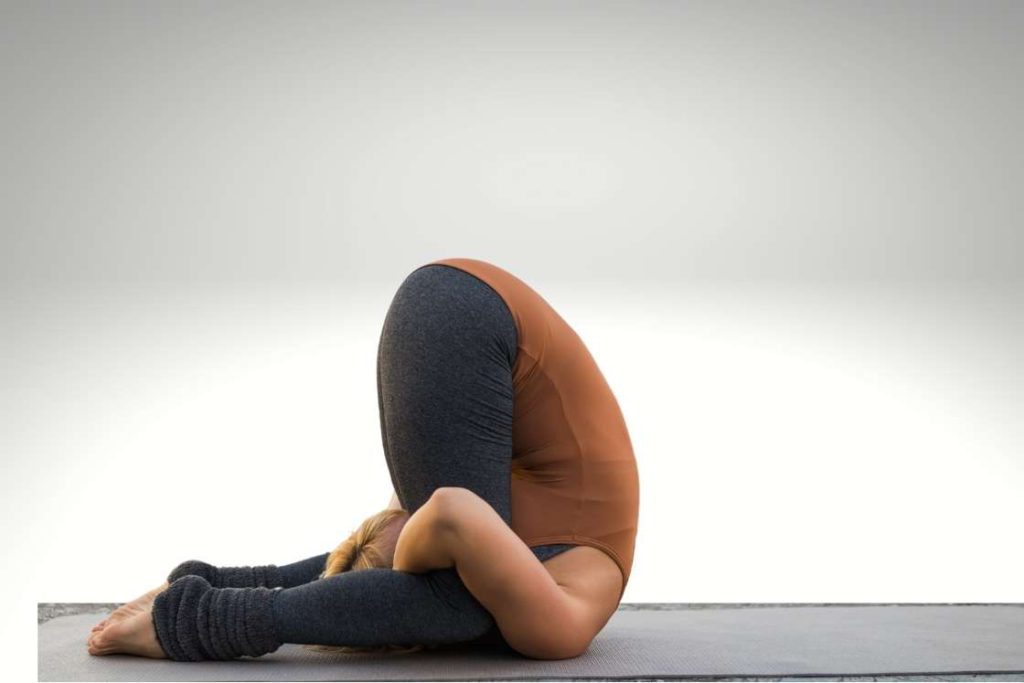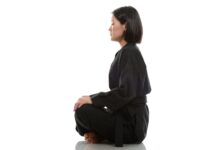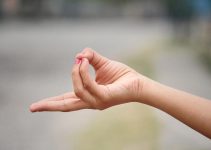
Pashinee Mudra is an advanced yogic gesture recognised for its ability to release deep-seated fears and mental blocks stored in the subconscious mind. This mudra is performed from Halasana (Plough Pose) as its foundational posture, which is why it is classified as a postural (Kaya) mudra in traditional yoga.
Rooted in the Hatha Yoga tradition, Pashinee Mudra demands a high degree of spinal flexibility, strength, and consistent practice, making it a challenging technique suitable for experienced practitioners.
Despite its complexity, Pashinee Mudra offers profound physical, energetic, and psychological benefits, making it a highly rewarding practice for those seeking transformation on both the body and mind level.
Pashinee mudra meaning
The term Pashinee comes from the Sanskrit word “Pasha”, meaning “noose” or “bond.” In this context, Pashinee refers to being “bound in a noose,” while Mudra translates to “gesture” or “seal.”
In Pashinee Mudra, the body transitions from Halasana (Plough Pose) into a deeper fold, bringing the knees close to the ears. This compact, bound position resembles the tightening and pulling of a noose—hence the name.
Beyond its physical form, Pashinee Mudra is valued for its profound calming effects on the nervous system, helping release deep-seated tensions. Due to its inward, self-contained nature, it is also known as the Folded Psychic Attitude, symbolising withdrawal of the senses and inner awareness.
How to do pashinee mudra
- Get into Halasana at first and separate the feet by about half a meter.
- Bend the knees and bring the thighs towards the chest until the knees touch the ears, shoulder, and floor.
- Wrap the arms tightly around the legs and relax the body.
- Close your eyes and take deep and slow breaths.
- Hold the final position as long as comfortably possible.
- Now, gently release the arms to come back to Halasana.
- Lower the legs and then relax in Shavasana.
Contraindications
- Do not practice Pashinee Mudra if there is any spinal condition or disorder.
- Avoid this mudra if you are suffering from diarrhea.
- Do not try it if you have a deep or recent neck injury.
- Women must skip this mudra during menstruation or pregnancy.
Precautions
- Try not to push yourself and practice it as slowly and gently as possible.
- Practice Pashinee mudra on an empty stomach.
- Get into the practice of this mudra only once you have gained expertise in halasana.
Note: Keep your awareness towards the stretched neck while staying in Pashinee mudra. Spiritually, the mind must be focused on the Vishuddha chakra.
Pashinee mudra benefits
Pashinee Mudra offers deep spinal flexibility, strengthens core muscles, and enhances blood flow to the brain. This advanced pose calms the nervous system, improves digestion, and promotes inner stillness, making it beneficial for both body and mind.
1. Increases spine flexibility – The deep forward fold in Pashinee Mudra stretches and lengthens the spinal column, improving mobility and releasing stiffness in the back muscles. Over time, it increases the spine’s overall flexibility and resilience.
2. Relaxes the nervous system – This posture gently stimulates the nerves, promoting relaxation while revitalising the entire nervous system. By easing nerve tension, it helps dissolve deep-rooted subconscious fears and even releases instinctive “fight or flight” conditioning, such as the fear of being restrained.
3. Stimulates energy chakras – Pashinee mudra stimulates five chakras initiating from the root (Muladhara) chakra to the throat (Vishuddha) chakra. Thus, provides multiple health benefits.
4. Tones abdominal organs – The intense fold in this mudra compresses and massages the abdominal area, toning internal organs such as the stomach, intestines, and liver. This improves digestion, detoxification, and overall abdominal health.
5. Draws awareness towards inner-self – Holding this mudra balances the nervous system and provides time to dive into the inner self. It enables the yogi to attain pratyahara and brings tranquility.
Conclusion
Pashinee Mudra combines the benefits of a deep forward bend with an inward meditative seal, offering both physical and mental rewards. While it is an advanced practice, approaching it with proper preparation and awareness can make it a powerful tool for flexibility, digestion, and inner focus. Always practise under guidance to ensure safety and gain its full benefits.




